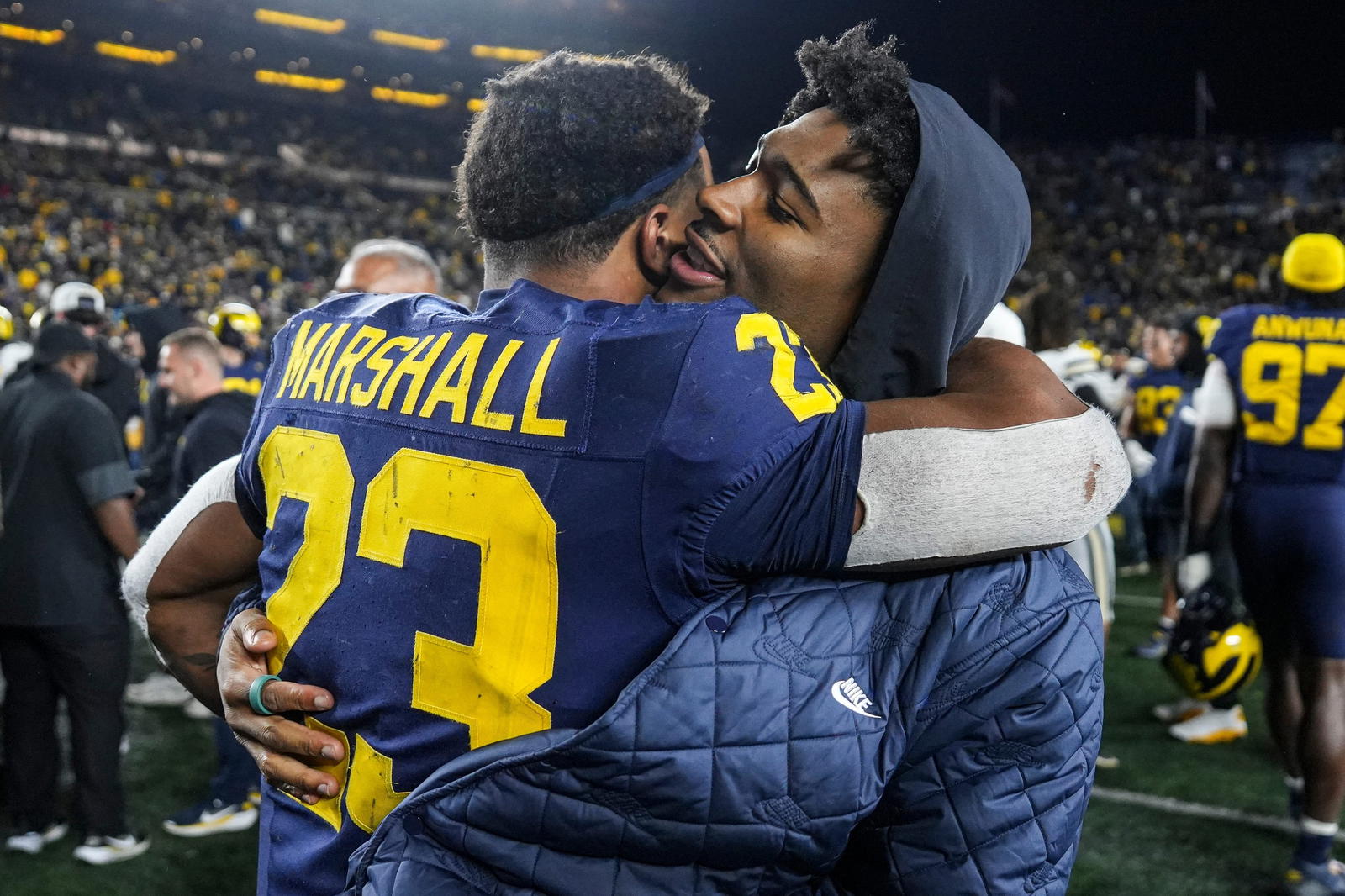
Michigan's rushing attack pivots. Can Jordan Marshall's power and Bryce Underwood's arm carry the Wolverines without their star?
The news that star running back Justice Haynes will undergo foot surgery, with an uncertain recovery timeline, deals a significant blow to the Michigan Wolverines' offense. As the Big Ten’s leading rusher and a critical engine for the team’s attack, his absence forces a sudden and major shift in offensive identity for head coach Sherrone Moore and offensive coordinator Chip Lindsey. While the goal of a balanced, physical offense remains, the how of achieving it will change immediately.
The Rise of Jordan Marshall
The most direct impact will be seen in the elevation of sophomore Jordan Marshall to the unquestioned lead back. Marshall is a talented runner in his own right, providing a slightly different style than Haynes. While Haynes is known as an elite, home-run hitter with game-breaking speed—evidenced by his nation-leading average yards per carry—Marshall is more of a physical, grinding back. He excels at breaking tackles, gaining yards after contact, and falling forward for tough yardage.
Crucially, Marshall has proven capable of handling a massive workload. In games where Haynes has been limited, Marshall has delivered, including a recent 185-yard, three-touchdown performance against Purdue. This demonstrates that the ground game can still be productive, but it will rely more on sustained drives and punishing physicality rather than explosive, 50-yard bursts. Marshall will need to maintain his high level of play while managing the increased wear and tear of being the primary ball-carrier. The depth behind him, including freshman Jasper Parker, will be tested, needing to spell Marshall effectively.
A Shift in Offensive Philosophy
Michigan's offense, which has historically leaned on a dominant rushing attack to set up the pass, will likely become more reliant on the right arm of true freshman quarterback Bryce Underwood. While the young signal-caller has shown flashes of brilliance, a lack of consistency in the passing game has been one of the unit’s few relative weaknesses this season. Without the threat of Haynes consistently keeping safeties and linebackers honest, opposing defenses will be able to dedicate more attention to stopping the run.
This will put a greater onus on Underwood to quickly mature as a passer. The offense will need to incorporate more play-action passing and RPOs (Run-Pass Options) that stress the intermediate and deep parts of the field. Wide receivers like Semaj Morgan and Donaven McCulley will be expected to win more one-on-one battles on the perimeter. The offensive line, which has opened massive holes for Haynes, must now shift its focus to holding up longer in pass protection while continuing to dominate the trench for Marshall.
The Path to the Postseason
Ultimately, the blueprint for the Michigan offense won't drastically change; the Wolverines will still aim to be a physical, run-first team. However, the margin for error has shrunk considerably. The loss of Haynes takes away the offense's most reliable 'bail-out' option—a player capable of changing the trajectory of a drive or a game with a single touch.
Michigan’s ability to remain a College Football Playoff contender now hinges on two key factors: Jordan Marshall’s durability and consistency under a heavy load, and Bryce Underwood’s acceleration as a passer. If Marshall can sustain the ground attack and Underwood can evolve into a consistent, opportunistic threat through the air, the Wolverines can weather this storm until the slim hope of a late-season Haynes return. If not, the offense could face significant growing pains, especially in crucial late-season matchups.

